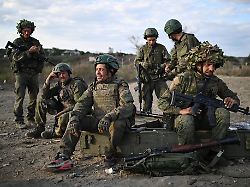Wealth is growing by leaps and bounds
War dead bring a windfall to Russia’s poorest regions
March 2, 2024, 1:19 p.m
Listen to article
This audio version was artificially generated. More info | Send feedback
Their sons, brothers and husbands die in Ukraine – this means a lot of suffering and a lot of money for their relatives in Russia. The September 2022 mobilization will pour hundreds of thousands of rubles into bank accounts in Russia’s poorest regions, the Finnish Central Bank finds.
In August 2023, Russian economist Vladislav Inozemtsev explained in an interview with ntv.de that the salaries of Russian soldiers had increased significantly in connection with the wave of mobilization for the invasion of Ukraine in autumn 2022. Now an analysis by the Finnish Central Bank shows that hundreds of thousands of rubles are arriving in the Russian regions from which a particularly large number of those mobilized come. The “Spiegel” even speaks of a macabre wealth boom.
According to the news magazine, the frontrunner in this development is the Russian republic of Tuva, a rural and sparsely populated region on the border with Mongolia. According to the analysis, after the Russian mobilization began in September 2022, bank deposits increased by 53 percent. Economist Laura Solanko calculated this.
She works at the Finnish Central Bank Research Institute (Bofit), which specializes in the analysis of emerging markets, including Russia. The basis for the assessment are monthly reports published by the Russian Central Bank on bank deposits.
In addition to Tuva, one of the poorest regions of the country, values also rose significantly in other structurally weak regions. Chechnya has an increase of 30 percent and Buryatia an increase of 33 percent.
700,000 rubles only for recruiting
The reason for this is the high number of recruits from these regions coupled with the significant increases in salaries and the compensation payments from the Ministry of Defense in the event of injury or death, explains Inosemtsew ntv.de in August. At the time, volunteers received between 200,000 and 600,000 rubles just for signing the commitment agreement, i.e. the equivalent of 2,000 to 6,000 euros. According to “Spiegel”, this “immediate bonus” now amounts to 700,000 rubles. In Tuva, this corresponds to 13 times the average monthly wage in 2022. At the time, according to Inosemtsev, there was also a monthly wage of 200,000 rubles.
It becomes really lucrative – but only for the relatives – when the recruited soldier dies in the war. Then there are numerous compensation payments. For this reason, the economist also speaks of “deathnomics” in the ntv.de interview, i.e. an “economy of death”. In the event of death, he reported at the time, the families would receive three million rubles, i.e. 30,000 euros in one fell swoop. According to the Finnish Central Bank’s analysis, this compensation is currently five million rubles, i.e. 50,000 euros, although Solanko emphasizes that this is not paid out in all cases. According to current figures, it has now been proven that a total of more than 45,000 Russian soldiers have died. So the costs for Moscow are immense.
Inozemtsev: Russia can continue for a long time
Solanko adds in her calculation that there is no clear evidence that the recorded growth in bank deposits can be attributed to payments from the Ministry of Defense. However, “war-related additional payments” are the most plausible reason for the increase. According to an overview, deposits across Russia grew significantly in the double-digit percentage range every month from February 2023 compared to the previous month. In the years 2017 to 2022, the increase was only ten percent in rare cases. In August 2023 it even increased by 20 percent compared to July. In addition, Solanko continued, bank deposits in other regions are growing at approximately the same rate as general wages and salaries. In the Tuva or Chechnya regions, however, the increase in bank deposits exceeds them many times over.
The poorest regions of Russia are currently benefiting the most financially because “death is the most lucrative use of life,” as Inozemtsev now tells “Spiegel”. And there is no end in sight, as the economist explained to ntv.de. When asked how long Russia could continue this form of “deathnomics,” he said: “For quite some time. It’s purely a question of price. If the government increases the payments, many Russians will opt for it Report deployment. 300,000 men were recruited during the mobilization. Compared to the population of 145 million people, that is small. With higher payments, the Kremlin can certainly easily mobilize another 500,000 or 600,000 people.”
